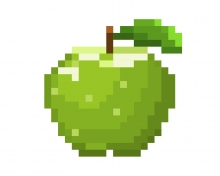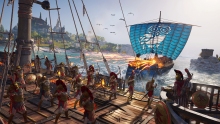
Chris, what exactly are MILEs?
Chris Cataldi: MILEs, short for Massive Interactive Live Events, are cloud-powered, highly engaging, live broadcast events that allow audiences of any size to have meaningful interactions with the content being streamed. MILEs are different from traditional video games in many ways. E.g. there are no downloads or installs at any time. You can jump in and play instantly, with instant updates. Also you have smooth video and gameplay on any device capable of running streaming video via a modest, 3G connection. Additionally, all participants are sharing the exact same experience – unlike, say, a live concert in Fortnite which feels like a massive collective experience but is distributed across many shards. Furthermore, your individual inputs impact what all participants are seeing and experiencing. MILEs are immersive, shared, alternative realities without the need for headsets. Also they're less time- and attention-intensive than traditional video games.
How did you come up with the idea for that?
Cataldi: Before starting Genvid, Jacob Navok, Fabien Niñoles, Jocelyn Houle, and I all worked for Shinra Technologies, the cloud gaming subsidiary of Square Enix. In the course of building out a cloud gaming platform for Square Enix’s games, we spent a lot of time thinking about the unique value proposition of cloud-native game experiences. Along the way, we started toying with the idea of the non-playing spectator being a key constituent and potential customer. Then along came Twitch Plays Pokemon: here was a different sort of game experience involving a million viewers all playing a game collectively in real-time via the livestream. We realized that there was another way of harnessing the power of the cloud to create engaging, entertaining experiences that wouldn’t require any software download or installation on the part of the users, and by marrying this with broadcast technology, we could allow access on virtually any video-capable device, and could be appealing and accessible to very large, broad audiences ... and the MILE concept was born.
MILEs are immersive, shared, alternative realities without the need for headsets
Your title Rival Peak took place between December 2020 and March 2021. What was it about?
Cataldi: Rival Peak was the world’s first purpose-built, commercial MILE. Co-created by Genvid, Pipeworks Studios and DJ2 Entertainment for Facebook in just six months, Rival Peak – and its weekly companion show Rival Speak, hosted by Wil Wheaton – broadcast to millions of viewers around the world in several languages. Rival Peak placed 12 AI “contestants” in a sort of interactive reality television show format, with the contestants working to unravel the mysteries of their surroundings and survive elimination while viewers helped them in big and small ways throughout the 3-month season.
The Netflix film Black Mirror: Bandersnatch from 2018 was praised by media as a new form of interactive entertainment – because it let viewers decide how the story evolved. When you talk about MILEs like Rival Peak, that sounds quite similar. What are the biggest differences?
Cataldi: Bandersnatch was obviously an interesting way of showing how branching narrative can work to add interesting dimensions to a single viewer’s experience. This kind of content design is one that those of us from the game industry are very familiar with, but what was novel in this case was that Bandersnatch was accessible on a platform that wasn’t originally considered a gaming platform. Unlike Bandersnatch where your occasional individual interactions led to one of any number of finite possible endings, Rival Peak was built from the ground up to be communal as well as personal. The result was a second-to-second experience that was influenced by millions of viewers interacting millions of times both collectively and individually in real-time, 24 hours a day, 7 days a week for three months. Viewers were influencing the story at every turn, determining which contestant would be eliminated each week, and also solving the enigma of the deep narrative as the season progressed.
How could the audience influence the plot?
Cataldi: There were many kinds of interactions available to the Rival Peak audience. Viewers were able to help the contestants with various tasks, like chopping wood, building a fire or gathering food. They could also help them make decisions, e.g.: Should Sabuun tell Winter how he really feels about them? Should Coach prioritize finding food or building a shelter? Viewers could also collectively decide what the weather should be tomorrow – e.g. thunderstorms or blue skies – and much more. Further, simply by following the contestants and learning about them, viewers contributed to each AI character’s cumulative score, which in turn was used to determine who was eliminated each week. If your readers want to check it out firsthand, they can still experience the interactive livestreams at the heart of Rival Peak under facebook.com/gaming/play/rivalpeak, where it continues to exist in a sort of "rerun mode."
Rival Peak was built from the ground up to be communal as well as personal
Implementing all those features seems quite tricky. What were the biggest challenges in creating Rival Peak?
Cataldi: The single biggest challenge was building a MILE of this scale and sophistication for the first time. We’d done numerous other projects, including providing enhanced, interactive livestreams for some of the biggest esports events, namely multiple CS:GO Majors. But Rival Peak was bigger: It was a global, persistent 24/7 live event – available in five languages, running for more than three months, involving 13 simultaneous interactive livestreams AND a weekly companion show that was written week-by-week to reflect the shifting storyline. Even we, the creators, didn’t know how the viewers’ interactions would affect various subplots and contestant eliminations. And of course all of this took place at the height of the pandemic. So there were many aspects of Rival Peak production that were challenging: One challenge was the design and development of the virtual environment and AI characters. Another was the integration of our enhanced livestream SDK with the live broadcast of the Rival Peak environment and Facebook’s streaming system. A third challenge was the live, backend server operations keeping the whole thing running day and night.
Rival Peak ran for three months. What adjustments did you make during this time?
Cataldi: One of the benefits of MILEs, as mentioned earlier, is the ability to update the content. This included the interactive livestream overlay, where the Rival Peak viewer interface lived – instantly, without users having to download or install anything. We used this to our advantage throughout Rival Peak’s run, adding a wide range of features and functionality based on viewer feedback. This included interactive pop-up maps, mini-games that could be played in-stream to add more points to your favorite contestant’s score, an achievements system, story recaps, and various UI and UX improvements.
The single biggest challenge was building a MILE of this scale and sophistication for the first time
What have you learned from Rival Peak for your upcoming projects?
Cataldi: We found that the Facebook audience was massive and interested in this new type of genre. India, Brazil, USA, Mexico and the Philippines were our top 5 active countries, and the viewer demographic combined more traditional gaming as well as a wider audience, from an age and from a gender perspective. One of our conclusions is to build MILEs based on where they will live and who will consume them: for a broad audience like Facebook’s, Rival Peak was designed to emphasize the TV aspects more than the game-like elements. In the future, MILEs may often be more game-like, as the Project Raven concept trailer illustrates. Another conclusion is to work with top tier development and production partners. We were fortunate to have AAA game developer Pipeworks Studios and top tier Hollywood production house DJ2 Entertainment join us in creating Rival Peak, to ensure the highest quality content in every respect.
Right now you're working on Project Raven. What is it about?
Cataldi: Project Raven is a prototype, showing what future MILEs will look and feel like. It places a group of teenagers in the tried-and-true horror setting of an old cabin deep in a creepy forest, with monsters lurking everywhere. Viewers can choose to help the teenagers or terrorize them by helping the monsters. Project Raven is considerably more polished than Rival Peak in some ways, with more realistic-looking characters and more game-like elements for viewers to interact with -- and it’s still very early in development. Most importantly, if and when Project Raven becomes an official MILE, it will feature globally recognized IP: a world and characters from a famous film or TV show, comic book, or video game franchise that has a large existing fan base. So Project Raven will no doubt look very different from the current, early prototype showcased in the concept trailer.
How important are well-known IPs for the success of a MILE?
Cataldi: We believe that well-known IPs will be very valuable to future MILEs, and are negotiating with a number of major IP holders now to create MILEs involving beloved worlds and characters from film/TV, video game, and comic book media. We saw with Rival Peak, which was entirely original IP, that it took several weeks for the audience to truly become invested in the characters. When they did become invested, viewership increased in all respects: number of viewers, number of viewer interactions, and time spent viewing all increased dramatically – by 55 times from week one to the final week.
Genvid Holdings recently raised USD 113 million in series C funding. What goals are you targeting with that money?
Cataldi: We are using that infusion of capital to create a new publishing subsidiary, Genvid Entertainment, that will produce and publish MILEs in-house. We also look to double-down on our technology, from a feature and usability standpoint. We expect to double our workforce over the next twelve months, adding industry veterans from Hollywood and the tech and video game industries to staff Genvid Entertainment so that we can launch new MILEs on a frequent basis going forward.
We believe that well-known IPs will be very valuable to future MILEs
There has been a lot of talk about "the metaverse" recently. Mark Zuckerberg said he wants Facebook to become a "metaverse company". In your self-description, you write that Genvid "is helping put the 'meta' in the metaverse. In what way?
Cataldi: To answer that question I have to go back a little further. We agree with the forecast of leading metaverse visionary Matthew Ball, who by the way is a longtime Genvid advisor and co-founder of the first Metaverse ETF.
First, Matthew predicts that the metaverse will be persistent – that is, it never "resets", "pauses", or "ends". No, it continues indefinitely.
Second, it will be synchronous and live – a living experience that exists continuously for everyone and in real-time.
Third, there will be no cap limit for concurrent users in the metaverse – while also providing each user with an individual sense of “presence”.
Fourth, it will be a fully functioning economy. Individuals and businesses will be able to create, own, invest, sell, and be rewarded for a wide range of “work” that produces “value”.
Fifth, the metaverse will be an experience that spans both the digital and physical worlds, private and public networks and experiences, and closed platforms.
Sixth, it will offer unprecedented interoperability – of data, digital items and assets, content, and so forth.
And seventh, the metaverse will be populated by content and experiences operated by an incredibly wide range of contributors.
The reason why I am listing all of this is: MILEs already meet most of these criteria, and will evolve over time to address others like numbers 4 and 7. We don’t envision MILEs being the epitome of metaverse, but rather they will be some of the first steps for the vast majority of interested parties today, rather than waiting several years for yet-to-be-established technologies to take hold. To summarize, we see MILEs as playing a significant part of the overall foundation of the metaverse in the coming years.
Let's turn our attention to another subject. What does Genvid bring to the table when it comes to esports?
Cataldi: Esports today is mostly a participant sport, meaning the viewers are usually a subset of the player base. This is in contrast to some of the bigger spectator sports we all know and love in the physical world. We see Genvid as being able to power the full in-stadium spectator experience, but for the digital masses, which expect their ability to access advanced functionality without having to download or launch the game. As mentioned earlier, we’ve provided premium livestream spectating experiences for many of the biggest CS:GO esports broadcasts in the past. Those livestream enhancements enabled broadcast spectators to control and customize their individual viewing experiences in all sorts of ways, from custom maps to changing the size and color of the crosshairs of the weapons the pros were wielding in-game, in real-time.
Which features proved themselves to be especially popular?
Cataldi: One of the most interesting enhancements was the ability for stream viewers to cheer for players and teams via the interactive livestream, such that the other viewers and the casters could see who fans were rooting for as matches occurred. We believe this functionality can be expanded and enhanced to create the equivalent of "home field advantage" that is felt by the players to inspire or demoralize them the same way fans in real-world stadiums impact games.
Is there a way that physical game retailers can profit from MILEs?
Cataldi: One of the key elements of the metaverse is bridging the physical and digital worlds. With MILEs we want to appeal to the largest audience possible, not just that of current gamers, but former and aspirant game enthusiasts. Meaning those who love the ideas of games, but without the time necessary to acquire and maintain skill required to enjoyably play. By appealing to the largest audience possible, we foresee a widening of the game-centered ecosystem that can include tailwinds for physical retail.
Could you please give an example for that?
Cataldi: Sure. MILEs are positioned to be more approachable and accessible than traditional video games. We believe MILEs will attract new and ‘outlier’ fans to existing or new IP, some of whom will “graduate” to or from more traditional AAA games featuring the same IP. As a hypothetical example, imagine a MILE of a popular fantasy title, with millions of fans of the source books and films. Jumping into a MILE of that IP would be easy and fun even for non-gamer fans of the franchise, and allow for a whole spectrum of options from there on how to continue that individual journey.
Such as?
Cataldi: There can be special offerings only to those participants in the MILE to redeem in physical retail and vice-versa. Furthermore, while we believe microtransactions are the most viable monetization method for MILEs, paid promotions could also be part of the mix. And those could have ties to retail games sales: E.g. "cast ten votes in the fantasy MILE and receive a coupon for 10 percent off your next purchase at GameRetailStore". Or "spend 30 minutes helping the wizard organize his laboratory and be entered in a drawing for a free fantasy game at all GameRetailStore locations next Saturday at noon".
Sounds very promising! When are we going to get updates on your upcoming projects?
Cataldi: We expect to announce the next MILE sometime soon, with its upcoming launch soon after. We also expect to have several MILEs in development simultaneously, working with many major IP holders across multiple projects such that we can announce and launch regularly and frequently, in 2022 and beyond. (Achim Fehrenbach)


